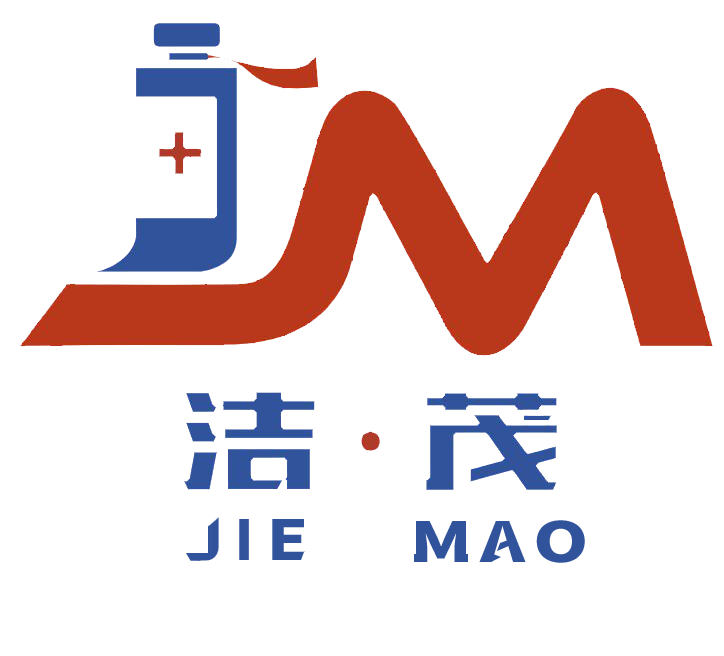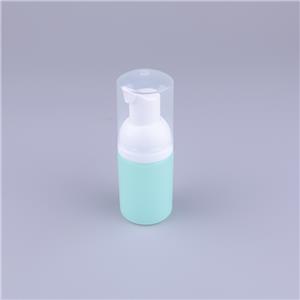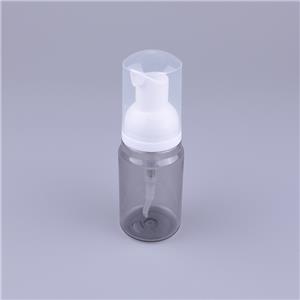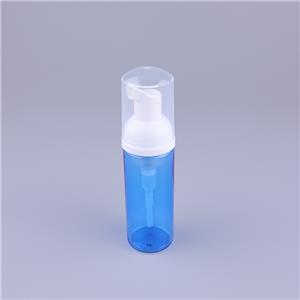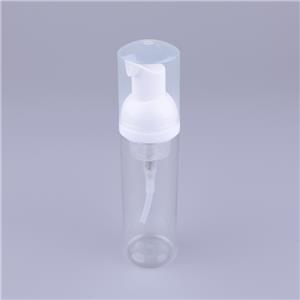- Home
- >
- News
- >
- Public Information
- >
- PVC material
PVC material
PVC material: a versatile plastic with unique properties, production methods, and diverse applications
Polyvinyl Chloride (PVC) is a thermoplastic polymer material synthesized through polyaddition reaction from vinyl chloride monomer (VCM). As one of the five major general-purpose plastics, PVC has become one of the most widely produced plastic varieties globally since its industrialization in the 1930s, thanks to its excellent comprehensive performance, low cost, and wide applicability. From construction pipes to packaging materials, from medical supplies to daily necessities, PVC has penetrated into various fields of production and life with its unique plasticity and functionality, while also continuously exploring sustainable development paths in environmental protection technology innovation.
1. Molecular structure and core characteristics
The molecular structure of PVC is the fundamental determinant of its properties. The repeating unit is -CH₂-CHCl-, and there is one chlorine atom for every two carbon atoms in the molecular chain (with a mass ratio of about 56%). This high chlorine content structure endows PVC with a series of distinct characteristics.
In terms of mechanical properties, the performance of PVC can be flexibly regulated through the content of plasticizers. Unplasticized PVC (rigid PVC, UPVC) exhibits strong rigidity and high hardness, with a tensile strength of up to 40-60 MPa and a bending modulus of 1500-3000 MPa, making it suitable for making structural components. Soft PVC, with the addition of plasticizers, exhibits excellent flexibility, with an elongation at break of up to 200%-400%, and can be made into elastic products such as films and hoses. However, pure PVC is relatively brittle and has low impact strength (the notched impact strength of rigid PVC is about 2-5 kJ/m²), requiring the addition of impact modifiers (such as ACR, CPE) to enhance toughness.
In terms of thermal properties, the glass transition temperature (Tg) of PVC is approximately 80-85℃. The continuous use temperature of rigid PVC can reach 60-70℃, while the heat resistance of soft PVC is slightly lower (40-60℃) due to the migration of plasticizers. Chlorinated PVC (CPVC), modified through chlorination, has its Tg increased to 90-110℃, and its continuous use temperature can reach above 90℃, expanding its application in high-temperature scenarios. PVC exhibits outstanding flame retardancy, with an oxygen index of 24-28 (higher than most plastics), meeting basic fire protection requirements without the need for additional flame retardants. This characteristic makes it highly advantageous in the construction field.
Chemical stability is the core advantage of PVC, which exhibits excellent resistance to inorganic chemicals such as acids, alkalis, and salts, and is not corroded by most organic solvents at room temperature (except for strong solvents such as ketones and esters). This corrosion resistance makes rigid PVC an ideal material for chemical pipelines and storage tanks, allowing it to transport corrosive fluids for extended periods without aging.
In terms of processing performance, PVC itself has poor thermal stability, with a melting temperature (160-200℃) close to its decomposition temperature (above 200℃, it is prone to releasing HCl gas). Therefore, heat stabilizers (such as calcium-zinc stabilizers and organic tin stabilizers) must be added during processing. Through processes such as extrusion, injection molding, calendering, and blow molding, PVC can be made into various forms of products such as pipes, plates, films, and profiles, with extremely strong plasticity, capable of meeting the molding requirements of complex shapes.
In addition, PVC has good electrical insulation properties and can be used as the insulating layer of wires and cables. Its surface is easy to print, paint, and weld, facilitating secondary processing to enhance appearance and functionality. It has significant cost advantages, with abundant sources of raw materials, and a cost-performance ratio higher than that of most engineering plastics.
II. Production Process and Raw Material Sources
The industrial production of PVC utilizes vinyl chloride monomer (VCM) as the core raw material, with a mature production process that encompasses the entire chain from monomer synthesis, polymerization reaction, to product processing. The core lies in regulating product properties through precise control of the polymerization process.
The production of vinyl chloride monomer (VCM) serves as the foundation of the PVC industry chain, primarily involving two process routes: the acetylene route and the ethylene route. The acetylene route utilizes calcium carbide as the raw material. Calcium carbide reacts with water to produce acetylene, which then undergoes addition with hydrogen chloride in the presence of a catalyst to generate VCM. This process is suitable for regions abundant in coal resources, but it incurs high energy consumption. The ethylene route employs ethylene produced through petroleum cracking as the raw material. Ethylene reacts with chlorine via oxychlorination to generate VCM. This process is more environmentally friendly and consumes less energy, making it the current mainstream process. In recent years, breakthroughs have been made in the research and development of bio-based vinyl chloride, which involves producing ethylene precursors through biomass fermentation, offering new possibilities for the greenification of PVC.
The polymerization process of PVC mainly includes suspension polymerization, emulsion polymerization, bulk polymerization, and solution polymerization, among which suspension polymerization and emulsion polymerization are the mainstream methods in industrial production.
Suspension polymerization is the primary process for producing general-purpose PVC, accounting for over 80% of global PVC production. This process involves dispersing vinyl chloride monomer in water to form a suspension, adding initiators (such as dicetyl peroxydicarbonate) and dispersants (such as polyvinyl alcohol), and then polymerizing the mixture under agitation at 50-70℃. The dispersant stabilizes the monomer droplets in suspension, and after polymerization, white particles (PVC resin powder) with a particle size of 0.1-2mm are formed. Suspension polymerization is easy to control, produces high purity products with uniform particle size, and is suitable for producing rigid PVC products such as pipes and sheets.
Emulsion polymerization is used to produce paste-like PVC (PVC paste resin), where VCM monomer is dispersed into micron-sized droplets under the action of emulsifier, and initiated by a water-soluble initiator (such as potassium persulfate) to form latex particles with a particle size of 0.1-1μm. The product of emulsion polymerization is colloidal and can be directly used in coating, impregnation, or slush molding processes to produce soft products such as artificial leather, gloves, and toys.
After polymerization, PVC resin powder needs to undergo post-treatment (dehydration, drying), and then additives (plasticizers, stabilizers, lubricants, fillers, etc.) are added according to the requirements of the product. It is then mixed, extruded, and granulated to produce granular raw materials. Additives are key to regulating the properties of PVC: plasticizers (such as phthalates, citrate esters) increase flexibility, and the higher the content, the softer the product; heat stabilizers prevent decomposition during processing; lubricants improve processing fluidity; fillers (such as calcium carbonate) reduce costs and enhance rigidity.
III. Classification and modification technology
PVC can be classified in various ways. According to the content of plasticizers, it can be divided into rigid PVC and soft PVC; according to the polymerization process, it can be classified into suspension PVC, emulsion PVC, etc.; according to performance modification, it can be classified into chlorinated PVC (CPVC), impact-resistant modified PVC, etc. The diverse classification makes it suitable for different scenarios.
Hard PVC (UPVC) has a plasticizer content of less than 5%, or even no plasticizer, and possesses high rigidity, high strength, and good dimensional stability. With a tensile strength of 40-60MPa and a bending modulus of 2000-3000MPa, it is suitable for making structural components. Hard PVC exhibits excellent chemical resistance and weather resistance, making it a core material in the construction and chemical industries, such as water supply and drainage pipes, door and window profiles, and chemical storage tanks.
Soft PVC has a plasticizer content ranging from 10% to 40%. Its flexibility increases with the increase of plasticizer content, and its elongation at break can reach 200% to 400%. Its Shore hardness is between 50-90A. Soft PVC exhibits good low-temperature resistance (remaining flexible even at -30℃), and is easily processed into films, hoses, artificial leather, etc. It is widely used in packaging, medical, and daily necessities fields.
Modified PVC optimizes its performance through chemical or physical methods. Chlorinated PVC (CPVC) is an important modified variety, produced by subjecting PVC to a chlorination reaction, which increases the chlorine content to 63%-68%. This significantly enhances its heat resistance (continuous use temperature of 90-100°C), and its pressure resistance and chemical resistance are superior to those of rigid PVC, making it suitable for hot water pipes and chemical pipelines. Impact-resistant modified PVC incorporates impact modifiers such as ACR and CPE, increasing its impact strength by 3-5 times, making it suitable for outdoor products and structural components. Cross-linked PVC forms a network structure through chemical or radiation cross-linking, enhancing its heat resistance and solvent resistance, making it suitable for cable insulation layers.
IV. Diverse Application Fields
PVC, with its adjustable properties and processing flexibility, has found widespread applications in various fields such as construction, packaging, healthcare, daily necessities, and industry, making it an indispensable material in modern society.
The construction sector represents the largest application market for PVC, accounting for over 60% of its usage. Due to its resistance to chemical corrosion, low fluid resistance, and ease of installation, rigid PVC pipes have replaced traditional metal pipes in municipal water supply and drainage, rainwater pipes, and chemical pipes, with a service life of up to 50 years or more. PVC door and window profiles are widely used in residential and commercial buildings due to their good thermal insulation and sound insulation properties, as well as their maintenance-free nature and low cost. PVC flooring (coil and sheet) is wear-resistant, anti-slip, and easy to clean, making it suitable for use in shopping malls, hospitals, and homes. PVC waterproofing membranes are highly weather-resistant and are used for waterproofing projects on roofs and basements.
In the packaging field, PVC film exhibits excellent transparency and barrier properties, making it suitable for shrink film used in beverage and beer bottle labels, which adheres tightly after heating. Soft PVC film is utilized for food and cosmetics packaging, offering superior flexibility and sealing capabilities. PVC bottles and cans demonstrate good chemical resistance and are used to contain liquids such as detergents and cosmetics, at a lower cost compared to PET bottles.
In the medical field, soft PVC, due to its flexibility, sealing properties, and low cost, is used to manufacture disposable medical supplies such as infusion tubes, blood bags, and syringe covers. Medical-grade additives (free of phthalate plasticizers and low-toxicity stabilizers) are required. PVC medical products can be steam sterilized, and their transparency facilitates the observation of liquid status, but attention should be paid to the migration of plasticizers.
In the daily necessities and industrial fields, soft PVC is used to make artificial leather, rain boots, gloves, tablecloths, etc., which are wear-resistant and dirt-resistant; PVC cable compounds are used for wire and cable sheaths due to their insulating and flame-retardant properties; PVC boards are cut to make billboards and display stands; modified PVC is also used in automotive interiors (such as dashboard skins), toys (slush molding process), agricultural greenhouse films, etc.
V. Environmental Protection and Development Trends
The environmental friendliness of PVC has long been controversial, but through technological innovation and standardized management, it is gradually moving towards sustainable development.
The environmental challenges of PVC mainly lie in two aspects: Firstly, vinyl chloride monomer (VCM) used in the production process is toxic, and its residual amount needs to be strictly controlled (the content of VCM in finished products must be below 1ppm). Secondly, there are concerns regarding the safety of plasticizers and stabilizers. Traditional phthalate-based plasticizers may interfere with endocrine systems, while lead salt stabilizers contain heavy metals, posing harm to both humans and the environment. Furthermore, when PVC is incinerated at insufficient temperatures (below 800°C), harmful substances such as dioxins are released, necessitating professional incineration facilities for disposal.
To address environmental issues, the industry has implemented a series of improvement measures: in terms of additives, the development of non-phthalate plasticizers (such as citrate esters, epoxidized soybean oil), lead-free stabilizers (calcium-zinc stabilizers, organic tin stabilizers), and medical-grade PVC has completely banned phthalate plasticizers; in production, promoting clean production processes to reduce VCM emissions and energy consumption; in recycling, PVC recycling technology is mature, with physical recycling involving sorting, cleaning, melting, and reshaping waste PVC to produce pipes, boards, etc.; chemical recycling involves decomposing PVC into VCM monomers through pyrolysis to achieve closed-loop recycling.
The global PVC recycling rate is gradually increasing. The European Union promotes PVC recycling through its "Circular Economy Action Plan", and the recycling rate of PVC pipes in the construction sector can reach over 90%. Meanwhile, progress has been made in the research and development of degradable PVC, which can be gradually degraded in specific environments by introducing hydrolyzable groups or adding biodegradable components.
The future development of PVC will focus on three directions: high-performance, environmental protection, and functionalization. High-performance will be achieved through molecular design and composite modification to enhance heat resistance (such as CPVC for high-temperature pipelines), weather resistance (adding UV absorbers for outdoor products), and mechanical properties; environmental protection will involve the comprehensive promotion of non-hazardous additives (no phthalates, no lead), improving the recycling system, and developing bio-based PVC (with some raw materials sourced from biomass); functionalization will focus on the research and development of antibacterial PVC (in the medical field), self-cleaning PVC (for building exterior walls), high-barrier PVC (for packaging), etc., expanding high-end application scenarios.
PVC, as a highly malleable material, embodies the collaborative progress of material science and social demand in its development journey. From basic household goods to high-end industrial components, PVC supports the operation of modern society with its cost-effective advantages. With the maturity of environmental protection technology and the advancement of circular economy, PVC will achieve sustainable development in addressing controversies and continue to play an important role as a material support.
